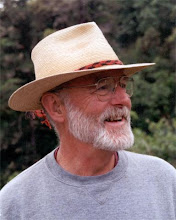I have almost given up on trying to define shamanism. We know that the word originates with the Tsungus of Siberia but it is now a modern term used to describe a wide variety of activities. Among anthropologists, indigenous healers, psychologists and others who use the term there is no agreement as to a specific meaning. I used to hand out a list of over 12 definitions which did not seem to clarify anything.
I have fallen back on Harner’s definition which, briefly, includes the following:
1. an altered state of consciousness on the part of the shaman
2. the enlistment of aid from “spiritual” helpers
3. the intention to heal or aid others in some fashion
4. control of the activity
This is not his exact definition. It is my summary of it and as you can imagine, each of the elements has its own problems and meanings to consider. For example, what, exactly, is an “altered state of consciousness?” Or, what is a “spiritual helper?” And so on. My personal view is that intention and control are the most important elements in shamanic activity. Broadly used, the word “shamanism” may not include all, or any of those elements, and there is usually, in circles, a “pull” to be more inclusive with the term.
My teaching is almost totally experiential so an academic discussion of the work can be interesting and an important underpinning to personal experiences but such a discussion has little effect in furthering actual shamanic work. Lots of people with anthropology credentials know a lot about shamanism but never do it. I can give you lots of references to their writing.
Subscribe to:
Post Comments (Atom)

No comments:
Post a Comment
Thank you for your comment. After review it will be posted. This can take up to a day or two.